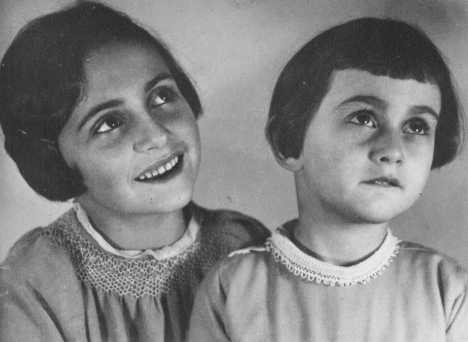Anne Frank, a name synonymous with courage, resilience, and the unfathomable horrors of the Holocaust, remains one of the most discussed figures of the 20th century. But Why Is Anne Frank Famous? It’s not because of heroic deeds in battle or grand political achievements. Her fame stems from something far more intimate and powerful: her diary. This poignant and insightful journal, penned during her family’s two years in hiding from Nazi persecution, offers an unparalleled glimpse into the life of a young girl grappling with extraordinary circumstances.
Anne Frank’s Early Life and the Shadow of Nazism
Born Annelies Marie Frank on June 12, 1929, in Frankfurt, Germany, Anne was the younger daughter of Otto and Edith Frank. Her early years were initially comfortable, but the rising tide of Nazism dramatically altered her family’s destiny. As Adolf Hitler and the Nazi party gained power in 1933, life became increasingly precarious for Jewish families in Germany. Recognizing the imminent danger, Otto Frank, a businessman, made the crucial decision to move his family to Amsterdam in the Netherlands, seeking refuge and a chance to rebuild their lives. Anne, along with her parents and older sister Margot, settled in Amsterdam. However, this newfound safety was to be short-lived.
The German occupation of the Netherlands in May 1940 once again placed the Frank family under Nazi rule. Restrictions and persecutions against Jews intensified. By 1942, the systematic deportation of Jews from the Netherlands to concentration camps in the East began. Faced with this terrifying reality, the Frank family made the life-altering decision to go into hiding.
Life in the Secret Annex: A Diary as a Confidante
In July 1942, Anne and her family, along with four other Jewish individuals – Hermann, Auguste, and Peter van Pels, and Fritz Pfeffer – sought refuge in a concealed annex behind Otto Frank’s business premises at Prinsengracht 263. This “Secret Annex,” as Anne famously called it in her diary, became their confined world for over two years. Supported by courageous helpers like Miep Gies and Johannes Kleiman, who risked their own lives to provide them with food and supplies, the inhabitants of the annex lived in constant fear of discovery.
During this period of confinement, Anne received a diary for her thirteenth birthday shortly before going into hiding. This diary became her closest confidante, a space to articulate her thoughts, fears, dreams, and observations about the world both inside and outside the Secret Annex. Her entries reveal the everyday challenges of hiding, the complexities of human relationships under pressure, and her own personal growth amidst extraordinary adversity. It’s this raw, honest, and insightful account of a young girl’s life in hiding that forms the core of her enduring fame.
Betrayal, Deportation, and a Tragic End
Tragically, on August 4, 1944, the Secret Annex was raided by the German SS and police. The residents were betrayed, their hiding place discovered. The Franks and the others were arrested and sent to Westerbork transit camp, and then deported to Auschwitz-Birkenau concentration camp. Separated from her father, Anne and her sister Margot were later transferred to Bergen-Belsen concentration camp in the autumn of 1944.
In the horrific conditions of Bergen-Belsen, both Anne and Margot succumbed to typhus in February or March 1945, just weeks before the camp was liberated by British troops. Anne was only 15 years old. Her mother, Edith, had died in Auschwitz in January 1945. Only Otto Frank survived the Holocaust.
The Enduring Legacy of “The Diary of a Young Girl”
After the war, Miep Gies, one of the helpers, gave Otto Frank Anne’s diary and writings, which she had bravely saved. Otto Frank, after much consideration, fulfilled Anne’s wish to become a writer and published her diary under the title “The Diary of a Young Girl.”
This publication is the primary reason why Anne Frank is famous. Her diary is a powerful testament to the human spirit in the face of unimaginable cruelty. It is not just a historical document of the Holocaust; it’s a universal story of adolescence, hope, and the struggle for identity in desperate times. Anne’s voice, so honest and relatable, resonates with readers across cultures and generations.
“The Diary of a Young Girl” has been translated into over 70 languages and is read worldwide. It has become a cornerstone of Holocaust education, offering a personal and deeply moving perspective on a horrific period in history. Anne Frank’s diary has made her a symbol of the millions of victims of the Holocaust, and her words continue to inspire reflection on tolerance, prejudice, and the importance of fighting for a better world. Her fame is not just about her tragic story, but about the enduring power of her words to touch hearts and minds globally, ensuring that the lessons of the Holocaust are never forgotten.
